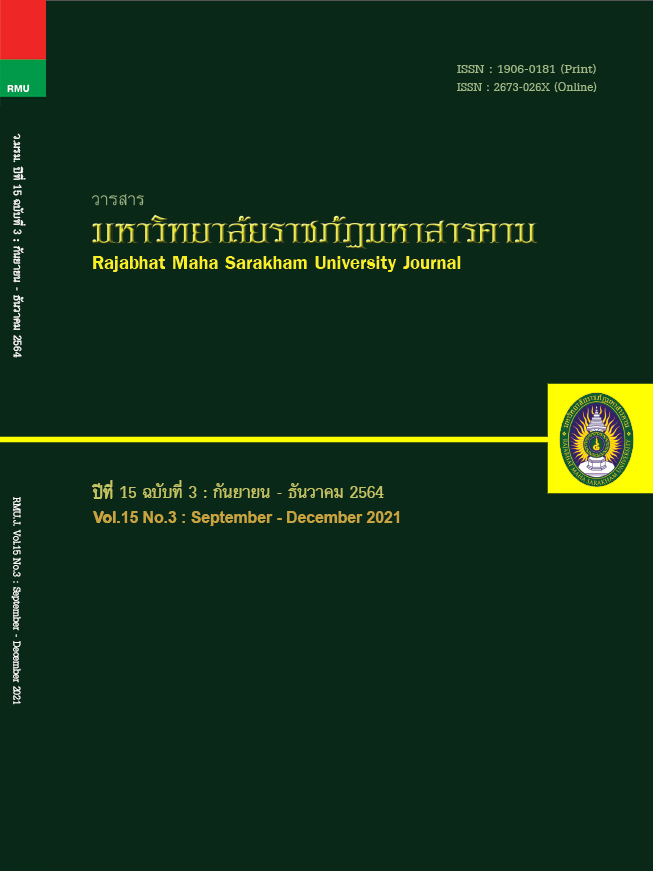Scientific Realism
Main Article Content
Abstract
The scientific realism is a philosophy of science which believes that there is the truth about the world, the universe, and mankind. The scientific realists declare that the truth exists in nature even if perceived by humans or not. The truth is not only what we see. There is something which is true and exists beyond observation of mankind, stay behind the order in the nature. They insist because of that, therefore the appearance world is consistency and orderly. Besides this, the success of scientific practice is in this regard. This article reviews how the scientific realists explained natural phenomena and the ideas of scientific realist famous scientists such as Newton, Einstein and Darwin. This article also provides ideas to conduct scientific realism into science teaching and learning.
Article Details
1. All articles undergo a thorough with at least three reviewers evaluating their suitability within the respective field of study, during the double-blind review.
2. The views expressed by individual authors do not represent the official views of the Editorial Boards of RMUJ: The author of each articie is responsible for all its contents.
3. The Editorial Boards do not reserve the copyrights. but proper citations need to be made.
References
ศิริสุดา แสนอิว. (2557). การวิเคราะห์ทฤษฎีสัจนิยมใหม่ของเคนเน็ธวอลซ์ผ่านวิธีวิทยาการพิจารณาแบบ ย้อนกลับของแนวคิดสัจนิยมทางวิทยาศาสตร์. วารสารมนุษยศาสตร์ และสังคมศาสตร์. 5(2): 33-54.
Asay, J. (2018). Realism and Theories of Truth. In Juha Saatsi (Ed.), The Routledge Handbook of Scientific Realism, pp. 383-393. London: Rout-ledge.
Austin, W. H. (1970). Isaac Newton on Science and Reli-gion. Journal of the History of Ideas. 31(4), 521.
Bhaskar, R. (2008). A Realist Theory of Science. New York: Routledge.
Buckley, B. C. (2000). Interactive multimedia and model-Based Learning in Biology. International Journal of Science Education. 22(9), 895-935.
Buckley, B. C. and Boulter, C. J. (2000). Investigating the Role of Representations and Expressed Models in the Building Mental Models. In Gilbert, J. K. and Boulter, C.J. (Eds), Developing Models in Science Education, pp. 120-135. Netherlands: Kluwer Academic Publishers.
Darwin, C. (1859). On the Origin of Species by Means of Natural Selection, or the Preservation of Favoured Races in the Struggle for Life. London: John Murray.
Devitt, M. (2007). Scientific Realism. In F. Jackson and M. Smith (Eds), The Oxford Handbook of Contemporary Philosophy, pp. 768-791. United Kingdom: Oxford University Press.
Ducheyne, S. (2009). Understanding (in) Newton’s Argument for Universal Gravitation. Journal for General Philosophy of Science. 40(2), 227-258.
Gobert, J. D., and Buckley, B. C. (2000). Introduction to model-based teaching and learning in science education. International Journal of Science Education. 22(9), 891-894.
Heliawati, L., Afakillah, I. I. and Pursitasari, I. D. (2021). Creative Problem-Solving Learning through Open-Ended Experiment for Students' Understanding and Scientific Work Using Online Learning. International Journal of Instruction, 14(4), 321-336.
Hobri, A., Nazareth, E., Romlah, S., Safitri, J., Yuliati, N., Sarimanah, E., Monalisa, L. A. and Harisantoso, J. (2019). The Students’ Creative Thinking Ability in Accomplishing Collaborative Learning-Based Open-Ended Questions. IOP Conference Series: Earth and Environmental Science, 243, 1-9.
Oliver, M., Shah, B. McGoldrick, C. and Edwards, M. (2006). Students’ Experiences of Creativity.In N. Jackson, M. Oliver, M. Shaw, and J.Wisdom (Eds), Developing Creativity in Higher Education: An Imaginative Curriculum, pp. 43-58. London: Routledge.
Potter, T., Bryce, N. V. and Hartley, C. A. (2017). Cognitive Components Underpinning the Development of Model-Based Learning Developmental Cognitive Neuroscience. 25, 272-280.
Sankey, H. (2008). Scientific Realism and the Rationality of Science. Hampshire: Ashgate Publishing Li-mited.
Matthews, M. R. (1994). Science Teaching: The Role of .History and Philosophy of Science. London: Routledge.
Shaing. D. A. (2008). God Does Not Plays Dice: The Fulfillment of Einstein’s Quest for Law and Order in Nature. India: Pustak Mahal.
Zerecero, G. G. (2020). Molecular models and scientific realism. Found Chem. 22, 467-476.


